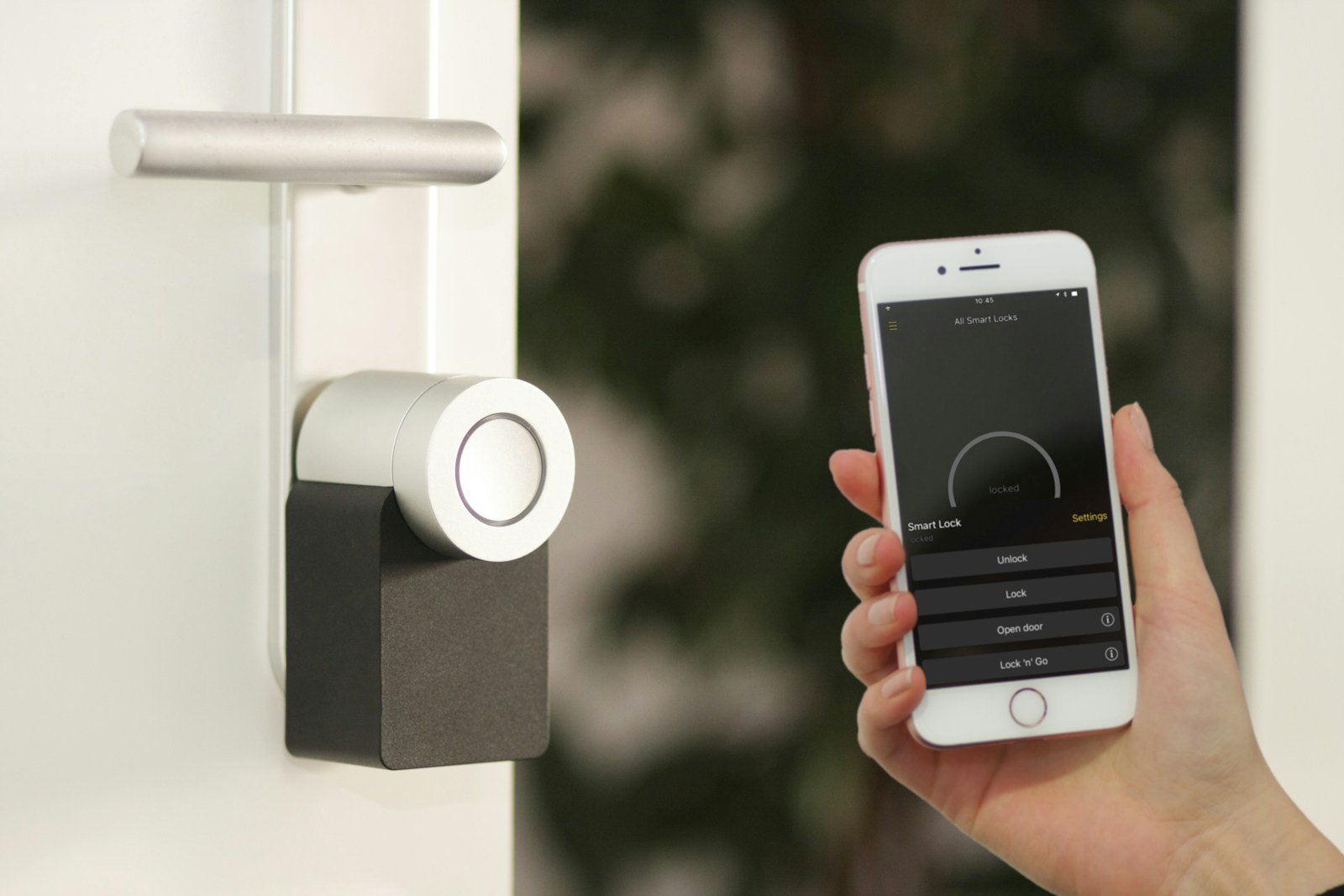Securing your home has never been more important. With technology making leaps and bounds, burglars have become more sophisticated, but thankfully, so have the ways to protect your home. In this guide, we’ll explore comprehensive steps to safeguard your home against intruders and unexpected threats. We cover everything from robust security systems to simple habits that make your house safer. Let’s dive into how you can make your home a fortress of security and peace of mind.
1. Install a High-Quality Security System
A home security system is one of the most effective deterrents against intruders. Today’s systems come with a range of features, from motion sensors and alarms to live video feeds. Here are some tips for selecting the right system:
- Choose Monitored Security: Systems monitored by a professional security company provide 24/7 oversight. If an alarm is triggered, the company will contact you and the authorities if necessary.
- Integrate Smart Features: Smart security systems offer numerous capabilities. You can control your system from your phone. You can also monitor live video feeds and receive alerts about suspicious activity. Brands like ADT, SimpliSafe, and Ring offer extensive smart security options.
- Consider DIY Options: For budget-conscious homeowners, DIY security systems are available. They are easy to install and can provide solid protection. However, you’ll be responsible for monitoring alerts.
2. Strengthen Entry Points
Most burglars enter homes through the front door, so ensuring your doors and windows are secure is essential.
- Upgrade to Solid-Core Doors: Solid wood or metal doors are much harder to kick in than hollow-core ones. Install deadbolts and, if possible, reinforce the strike plate with longer screws for added strength.
- Install Smart Locks: Smart locks allow you to control access to your home without physical keys. They’re especially useful for families and busy households where someone may forget to lock up. Many smart locks allow temporary access codes, perfect for visitors or service workers.
- Add Window Security Film: Windows are an easy target for intruders. Security film can be applied to windows to make them harder to break and holds shattered glass in place, preventing easy entry.
- Use Door and Window Sensors: These sensors will alert you when a door or window is opened. Many systems offer these as part of their package and notify you via smartphone when something is amiss.
3. Exterior Lighting and Landscaping
Burglars prefer dark spaces where they can go unnoticed. Using lighting and landscaping strategically can make your home much less appealing to a potential intruder.
- Install Motion-Activated Lights: Motion-activated lights can startle would-be intruders, who often choose another target rather than risk being seen. Place these lights around entry points and in dark corners.
- Use Timed or Smart Lights Indoors: If you’re away, set indoor lights to turn on and off at different times to create the illusion that someone’s home. Smart lights can be controlled remotely and add an extra layer of security.
- Trim Shrubs and Bushes: Large shrubs around windows or doors offer burglars a hiding place. Keep your landscaping tidy, especially around entry points. Consider planting thorny bushes under windows for added protection.
- Install Landscape Lighting: Pathway lights and garden lighting not only beautify your home but also eliminate shadows where intruders might hide. This simple measure can make your yard less inviting for unwanted visitors.
4. Security Cameras and Video Doorbells
Installing cameras around your home can help you monitor activity and serve as a deterrent. Even if a burglar decides to break in, recorded footage can help authorities catch them.
- Invest in High-Quality Cameras: Place cameras at entry points, near your garage, and in common areas. Choose models with high resolution, night vision, and remote viewing capabilities. Brands like Nest, Arlo, and Ring provide quality options.
- Use Video Doorbells: Video doorbells allow you to see who’s at your door, even if you’re not home. Most models include a two-way communication feature, so you can talk to the visitor, giving the impression that someone is home.
- Consider Cloud Storage: Many camera systems offer cloud storage so that footage is saved even if the camera is tampered with. Review storage policies and consider subscribing to a plan if it’s necessary for added security.
- Display Cameras Prominently: Make sure cameras are visible to deter potential intruders. Just seeing cameras can be enough to scare off a would-be burglar.
5. Secure Your Garage
The garage is an often-overlooked entry point, and it can offer easy access to your home and valuable tools.
- Use a Garage Door Timer: Garage doors are sometimes accidentally left open, so installing a timer that closes the door automatically after a set period can prevent this risk.
- Cover Garage Windows: If your garage has windows, cover them to prevent anyone from seeing inside. Opaque film or frosted glass can add privacy without sacrificing natural light.
- Install Deadbolts on Interior Doors: If there’s a door from the garage into your house, treat it like an exterior door. Use a solid-core door with a deadbolt for added security.
- Secure Garage Door Remotes: Many people keep garage remotes in their cars, but if someone breaks into your car, they’ll have easy access to your home. Use a small keychain remote you can take with you, or keep the remote hidden and locked in your car.
6. Install a Safe for Valuables
A safe is essential for protecting valuable items and important documents in case of a break-in.
- Choose a Heavy, Fire-Resistant Safe: Select a safe that is bolted down and too heavy to carry. Fire resistance is a plus, as it protects your valuables not only from theft but also from damage in case of a fire.
- Hide the Safe: Don’t place the safe in an obvious spot like your master bedroom. Consider hidden locations such as a closet or basement, or install it behind a false panel for additional security.
- Store Essential Documents and Jewelry: Use your safe to store sensitive documents (e.g., passports, wills) and irreplaceable items like family heirlooms or jewelry.
7. Get to Know Your Neighbors
Building relationships with neighbors can help create a safer environment, as everyone can keep an eye out for unusual activity. Here’s how to foster a sense of community:
- Form a Neighborhood Watch: Work with your neighbors to set up a neighborhood watch group. Even casual communication can improve neighborhood security.
- Communicate When Away: If you’re going on vacation, let trusted neighbors know so they can watch for anything unusual. They can also collect mail and newspapers, so it’s not obvious that you’re away.
- Connect Through Social Media Groups: Many neighborhoods have private social media groups or apps like Nextdoor. These can be helpful for sharing information about suspicious activity or organizing safety efforts.
8. Set Up a Perimeter Defense
Perimeter defenses deter criminals from approaching your home in the first place.
- Fence Your Property: A tall, sturdy fence can serve as a physical barrier. Wooden or metal fences work well and add privacy, while lower fences can still act as a visual boundary.
- Use Gate Locks: If you have gates leading to your backyard or other areas, make sure they’re securely locked. Chain locks or keypad locks are ideal for added security.
- Install Alarms on Exterior Doors: In addition to your main security system, consider door and window alarms on exterior points of entry like the basement or garage.
9. Invest in Fire and Flood Protection
Security is more than just preventing break-ins; it’s about safeguarding your home from all types of risks. Fire and water damage are also significant threats.
- Install Smoke and Carbon Monoxide Detectors: Place detectors on every floor and near bedrooms. Choose models with long battery life and test them monthly.
- Consider a Home Fire Extinguisher: Keep a fire extinguisher in high-risk areas, such as the kitchen. Be familiar with how to use it in case of emergency.
- Use Smart Water Leak Sensors: Place water leak sensors near appliances and pipes that may be prone to leaks. Many smart leak sensors send notifications to your phone if a leak is detected, allowing you to act quickly to prevent damage.
10. Develop Safe Habits
Finally, one of the most effective ways to secure your home is to develop safe habits. Here are some essential tips:
- Always Lock Doors and Windows: Even if you’re just stepping out for a few minutes, make it a habit to lock all entry points.
- Don’t Leave Spare Keys Outside: Intruders know all the common hiding spots for spare keys. If you need to leave a spare, give it to a trusted neighbor or invest in a smart lock that allows temporary access.
- Close Curtains or Blinds at Night: Leaving windows open at night can invite unwanted attention. Close blinds or curtains to prevent anyone from seeing inside.
- Don’t Advertise Your Vacation Plans: Avoid sharing travel plans on social media until you return. Broadcasting your absence publicly can make your home a target for burglary.
Conclusion
Securing your home involves a mix of modern technology, physical defenses, and smart habits. By investing in a quality security system, reinforcing entry points, building relationships with neighbors, and being mindful of potential risks, you can create a safe environment for yourself and your loved ones. While no system is 100% foolproof, these steps will make your home a less attractive target for intruders and provide you with greater peace of mind.
Whether you’re concerned about burglars, fires, or even natural disasters, taking a proactive approach will help ensure your home remains





